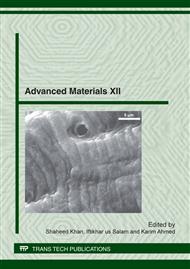p.532
p.540
p.547
p.554
p.560
p.569
p.577
p.585
p.591
Design of Axially Loaded Helical Spring Isolation Systems
Abstract:
Engineering metals have a desirable property of absorbing energy especially when they are manufactured into helical springs. This ability has been utilized favorably in the design of isolation systems. The material and spring behavior prolongs the time period of excitation thereby decreasing the frequency and acceleration of the shock into the structure. This paper presents the design and behavioral response of a steel spring isolation system subjected to shock excitation as experienced in real world applications. The isolation discussed is for the support motion where the shock excitation originates outside the structure. In particular the focus is on undamped single degree of freedom (SDOF) systems. The goal is to design a passive isolation system in the form of helical steel springs. The system must limit the instance of high acceleration energy transferred into the structure in a very short time frame. A transmissibility algorithm is developed and presented. A test case is designed and manufactured based upon the design data simulated from the algorithm. A comparative study is presented to validate the accuracy of the algorithm and isolation system against empirical results from the test case using a drop testing apparatus. The shock response spectra commonly used in problems of shock excitation to a half sine wave is presented.
Info:
Periodical:
Pages:
560-568
Citation:
Online since:
May 2012
Authors:
Price:
Сopyright:
© 2012 Trans Tech Publications Ltd. All Rights Reserved
Share:
Citation:


